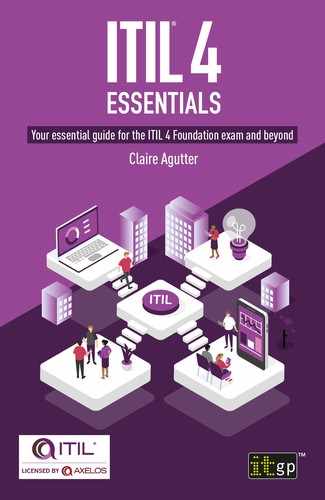0%
27Chapters
0-1Hours read
0kTotal Words
Table of Contents
- Cover
- Title
- Copyright
- Foreword
- Preface
- About the Author
- Acknowledgements
- Contents
- Chapter 1: Key concepts of service management
- Chapter 2: Service management roles
- Chapter 3: All about services
- Chapter 4: Service relationships
- Chapter 5: The four dimensions of service management
- Chapter 6: The Service Value System
- Chapter 7: The SVS: Opportunity, demand, value
- Chapter 8: The SVS: Guiding principles
- Guiding principle 1: Focus on value
- Guiding principle 2: Start where you are
- Guiding principle 3: Progress iteratively with feedback
- Guiding principle 4: Collaborate and promote visibility
- Guiding principle 5: Think and work holistically
- Guiding principle 6: Keep it simple and practical
- Guiding principle 7: Optimize and automate
- The benefits of automation
- Getting ready to automate
- Service management automation
- Chapter 9: The SVS: Governance
- Chapter 10: The SVS: The Service Value Chain
- Chapter 11: ITIL practices introduced
- Chapter 12: General management practices
- Continual improvement
- Information security management
- Knowledge management
- Measurement and reporting
- Organisational change management
- Portfolio management
- Project management
- Relationship management
- Risk management
- Service financial management
- Strategy management
- Supplier management
- Workforce and talent management
- Chapter 13: Service management practices
- Availability management
- Business analysis
- Capacity and performance management
- Change control
- Incident management
- IT asset management
- Monitoring and event management
- Problem management
- Release management
- Service catalogue management
- Service configuration management
- Service continuity management
- Service design
- The service desk
- Service level management
- Service request management
- Service validation and testing
- Chapter 14: Technical management practices
- Chapter 15: Service management training and qualifications
- Chapter 16: Multiple-choice exam strategies
- Bibliography
- Further reading
